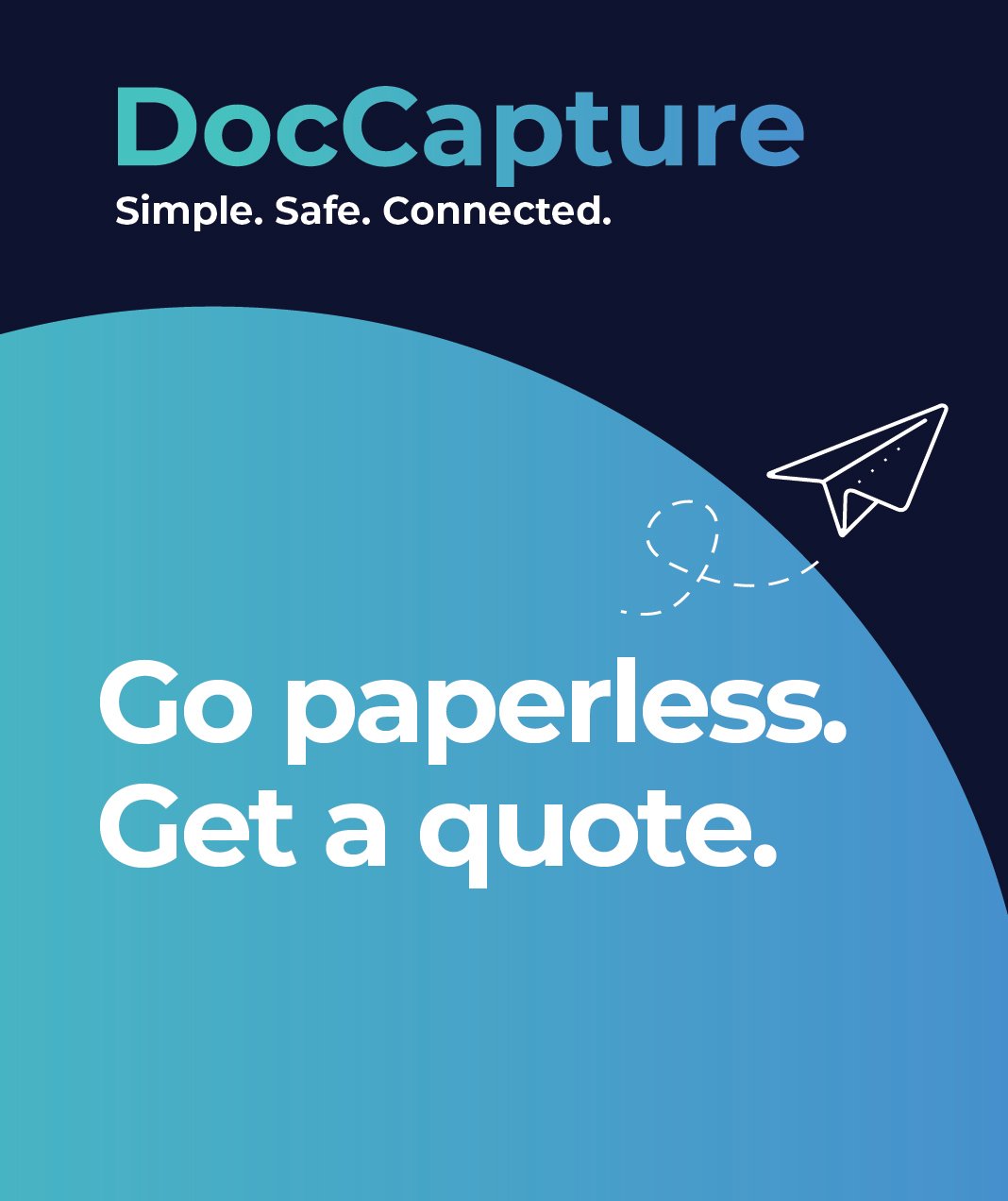Improving Employee Record Management with Document Scanning
Table of contents
Managing employee records has always been one of the most time-consuming and high-stakes responsibilities for HR professionals. From paper-based onboarding forms and performance evaluations to medical records and compliance documents, the sheer volume of files can quickly overwhelm even the most organized teams. For HR leaders in industries like education, healthcare, and other regulated sectors, the stakes are even higher—every misplaced file or delayed retrieval can expose the organization to compliance risks, data breaches, or costly inefficiencies.
That’s why many HR departments are turning to improving employee record management with document scanning as part of their broader digital transformation efforts. By moving away from physical files and embracing digital records, HR teams can reduce administrative burdens, safeguard sensitive employee information, and gain faster access to the documents they need—all while supporting long-term efficiency and compliance goals.
The Hidden Costs of Paper-Based Employee Record Management
At first glance, managing employee records with paper files might seem manageable. After all, HR teams have used filing cabinets, storage rooms, and manual processes for decades. But the hidden costs of paper-based systems add up quickly—and can create unnecessary risks for HR leaders.
Time Lost in Retrieving Files
Every time an HR professional has to dig through filing cabinets or offsite storage to find a single record, valuable hours are wasted. This inefficiency slows down critical HR processes like onboarding, promotions, or audits. By contrast, digitizing employee files allows for instant access to records, saving time and improving productivity (Scanning HR Documents).
Risk of Data Breaches or Misplaced Documents
Physical records are vulnerable to being misplaced, lost in transit, or accessed by unauthorized individuals. In regulated industries such as healthcare or education, a single data breach can lead to severe legal and financial repercussions. Digital systems, when properly secured, reduce these risks by applying encryption, audit trails, and access controls.
Compliance Risks with Audits or Labor Inspections
When auditors or inspectors arrive, HR teams relying on paper files often scramble to gather the necessary documentation. Missing or incomplete records can result in compliance violations and fines. Digital HR record-keeping not only simplifies audits but also ensures accuracy and consistency across files (Digital Record Keeping for Human Resources).
The reality is clear: paper-based systems create more obstacles than benefits. To overcome these challenges, HR leaders are increasingly turning to solutions like HR Document Scanning as the smarter, more sustainable path forward.
How Document Scanning Solves These Challenges
For HR leaders, the shift to digital record-keeping isn’t just about convenience—it’s about transforming how teams operate. By improving employee record management with document scanning, organizations can eliminate many of the inefficiencies and risks that come with paper-based systems.
Instant Access to Digital Files
With scanned employee records stored in secure digital repositories, HR professionals can retrieve documents within seconds. Whether it’s for onboarding a new hire or responding to a compliance request, instant access accelerates workflows and reduces administrative burdens (Workflow Software: The Secret Weapon for HR Departments).
Enhanced Data Security
Unlike paper files that can be lost, stolen, or damaged, digital records can be safeguarded with encryption, role-based access, and detailed audit trails. This level of protection is critical for industries managing sensitive employee data, ensuring compliance with HIPAA, GDPR, and other regulations.
Easier Compliance with HR Laws and Regulations
Digitized records simplify audits and labor inspections by keeping files consistent, searchable, and centralized. HR teams no longer waste time piecing together missing documentation. Instead, compliance becomes a streamlined, predictable process (2023 Guide to HR Document Retention Requirements).
Centralized Document Control for Remote/Hybrid Teams
Today’s HR departments often operate across multiple offices—or even entirely remotely. Scanning employee files into a centralized system ensures that all team members, regardless of location, have access to the same secure, up-to-date information (The Role of Scanning in Modern Human Resource Management).
By leveraging document scanning, HR professionals gain not just convenience, but also the confidence that their systems are secure, compliant, and built for the future.
Real-World Benefits for HR Teams
While the technical advantages of digitizing HR files are clear, the real impact comes in how document scanning changes day-to-day operations for HR teams. By focusing on practical outcomes, HR leaders can see exactly how digital transformation improves their departments.
Reduced Workload and Administrative Stress
Imagine an HR manager preparing for an audit. Instead of sorting through hundreds of paper files, they can locate everything with a quick digital search. This not only cuts hours from the process but also reduces stress and the risk of errors. HR professionals can then focus on higher-value responsibilities like employee engagement or strategic workforce planning (Revamping HR with Digital Transition).
Smoother Employee Onboarding and Offboarding
Document scanning accelerates onboarding by ensuring contracts, I-9 forms, and training documents are instantly accessible. Similarly, during offboarding, digital records allow HR teams to quickly process final paperwork, revoke access, and ensure compliance. This streamlined process improves the overall employee experience from start to finish.
Cost Savings and Decluttered Offices
Storing paper files isn’t just inconvenient—it’s expensive. Filing cabinets, storage space, and offsite records management all add up. By converting to digital, HR departments can reduce or even eliminate these costs while reclaiming valuable office space for more productive uses (HR 2.0: Digitizing Employee Files for the Future Workforce).
A Stronger Foundation for HR Strategy
When HR data is organized and accessible, teams can more easily analyze trends, support decision-making, and align with organizational goals. Document scanning lays the groundwork for a more agile and proactive HR function, one that’s ready to adapt to changing workplace demands.
By improving employee record management with document scanning, HR teams don’t just save time and money—they build a department that’s more resilient, efficient, and employee-focused.
Integration and Ease of Use
One of the most common concerns HR leaders raise about digitizing records is whether new systems will integrate smoothly with their existing tools. After all, many organizations already rely on HRIS, payroll platforms, or enterprise content management (ECM) solutions. The good news is that document scanning services are designed to work with these systems seamlessly.
Compatible with Existing HR Platforms
Modern scanning solutions don’t require HR teams to abandon their current tools. Instead, digital records can be indexed and linked to HRIS or ECM software, making it easy to retrieve and manage documents without disrupting existing workflows (HR Digital Revolution: Embracing ECM Software).
Addressing Cost Concerns
Budget limitations often hold HR departments back from investing in new technology. But when considering the ongoing costs of paper storage, administrative inefficiencies, and compliance risks, digitization typically proves to be the more cost-effective option in the long run. Many scanning providers also offer scalable solutions that allow HR teams to start small and expand as needed (Document Scanning Services for HR Departments).
Simplifying Change Management
Transitioning to digital processes can feel daunting, especially for teams used to paper files. However, with proper training and phased implementation, HR professionals often find the shift surprisingly intuitive. Once they experience the convenience of digital retrieval and secure sharing, adoption rates rise quickly.
By integrating scanning with existing HR systems, organizations remove barriers to adoption and make the process as seamless as possible. This ensures that digitization becomes a practical, sustainable solution rather than a disruptive challenge.
Why Now Is the Time to Act
The shift toward digital HR operations isn’t just a passing trend—it’s a necessity. As regulations tighten, workforces become more distributed, and employee expectations evolve, HR departments can no longer afford to rely on outdated, paper-based processes.
Rising Importance of Secure and Accessible Records
Employees and regulators alike expect quick, reliable access to information. Whether it’s producing a medical record for compliance or retrieving a training certificate for career advancement, delays caused by paper files are no longer acceptable. Digitization ensures HR teams can meet these expectations with speed and accuracy (It’s Time for HR Teams to Embrace Digital Transformation).
Futureproofing HR Departments
Digital records are more than a convenience—they’re an investment in long-term resilience. By improving employee record management with document scanning, HR teams establish systems that can scale as the organization grows. This futureproofs the department against rising document volumes, evolving compliance requirements, and the increasing need for secure data handling (Digital Transformation in HR).
A Scalable Starting Point with DocCapture
Adopting document scanning doesn’t require an all-or-nothing approach. Solutions like HR Document Scanning allow HR leaders to start with a pilot project—digitizing the most critical employee records first—before expanding to the entire archive. This phased approach minimizes disruption while delivering immediate benefits.
The longer HR teams wait to modernize, the more they risk falling behind in compliance, efficiency, and employee experience. Acting now ensures a smoother transition and positions HR as a leader in organizational digital transformation.
Conclusion
The challenges of managing paper-based employee records are clear: wasted time, compliance risks, and unnecessary costs. By improving employee record management with document scanning, HR departments can unlock greater efficiency, strengthen data security, and prepare for the future of work.
DocCapture specializes in helping HR teams make this transition seamless, secure, and scalable. Whether you’re starting with a small batch of critical employee files or planning a full-scale digital transformation, DocCapture provides the tools and expertise to support your goals.
👉 Ready to modernize your HR department? Visit our HR Document Scanning page to learn more, explore resources on Digital Transformation in HR, and fill out our “get a quote” form to get started today.
Share this
You May Also Like
These Related Stories

Reducing Operational Costs in HR with Document Scanning

Revolutionizing HR Workflows with Automated Document Scanning

